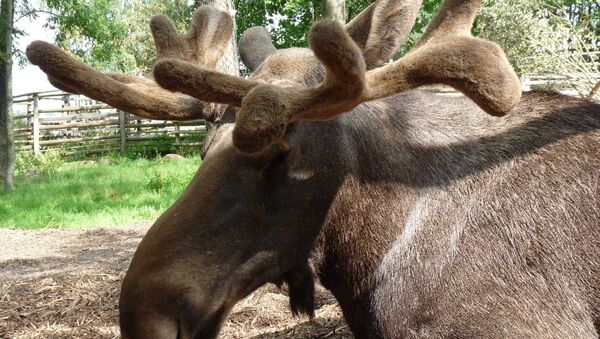The notorious infection emaciates and disorients the animals. The disease-ridden deer, exposing tell-tale symptoms, usually die within a few months. The infection has been found in North America since the 1960s, and it remains uncertain how it reached Norway in the first place. According to Swedish game pathologist Erik Ågren, it could be a case of spontaneous mutation, but the spread with imported animal products is more likely. If the disease is found in Sweden during monitoring, a ban on selling wild game may be imposed.
Cow and calf out together for lunch on a beautiful afternoon #Moose pic.twitter.com/4jpRYsnHA4
— neil waring (@wyohistoryguy) August 1, 2016
The autopsy room at the National Veterinary Institute in Uppsala is already in combat readiness mode to investigate the spread of the disease. According to Erik Ågren, the disease may be recognized through the dissection of the brain and the lymph nodes.
"First of all, as many samples as possible must be scrutinized to determine whether the infection already is manifest in Sweden," Ågren told Swedish national broadcaster SVT.
Although preparations are in full swing, specialists such as game warden Michael Johansson remain calm.
"So far, there have only been a few isolated cases. Earlier we had this bird flu. Some ten years ago, it was the talk of the town, but no mass deaths ensued. So far, we take it easy, but keeping an eye on the development," Michael Johansson said.
Chronic wasting disease (CWD) is a transmissible spongiform encephalopathy (TSE), only found in members of the deer family, such as mule deer, white-tailed deer, elk or moose. Remarkably, this disease is closely related to mad cow disease and only affects adult animals. As of today, there is no evidence of the transmission of the disease to humans.
Shooting #Google #Moose #View in #skånesdjurpark:) #skåne #djurpark #elg #höör https://t.co/nTjCVhg02b pic.twitter.com/io16rev9nq
— Magnus Högfeldt (@hogfeldt) 18 июля 2016 г.




